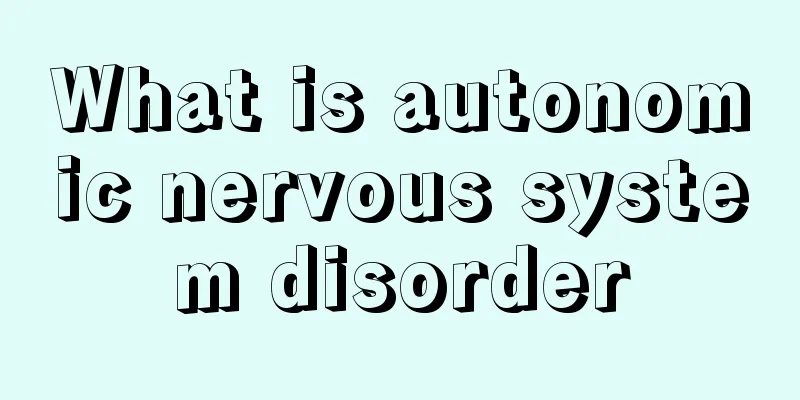Symptoms of scoliosis, early detection and early treatment

|
Scoliosis is a common spinal deformity. If scoliosis occurs in adolescents and children, it will affect their growth and development. Scoliosis can cause deformities in the back. There are many types of scoliosis clinically, the most common of which is idiopathic scoliosis. 1. Clinical manifestations In terms of appearance, scoliosis can cause a bulging back deformity, a "razor back" deformity, or even a "pectus excavatum" or "pectus pigeonae" deformity. Back deformity may be accompanied by imbalance of bilateral shoulder joints or pelvis, as well as unequal length of lower limbs, which may cause obvious local deformity, height reduction, reduction of chest and abdominal cavity capacity, and even damage to neurological function, respiratory function, and digestive function. At the same time, for patients with poor development of the spinal bone structure itself, it may be accompanied by neurological developmental abnormalities such as meningocele and spina bifida occulta. In addition, congenital scoliosis may also be accompanied by abnormalities of the cardiovascular system, tracheoesophageal fistula, polycystic kidney and other multi-organ abnormalities. Radiographic measurement The imaging diagnostic criteria for scoliosis or kyphosis include the measurement of the Cobb angle, which is the angle between the most inclined vertebrae at the two ends of the scoliosis or kyphosis (the most cranial and the most caudal ends), which is the most basic description of any spinal deformity. Idiopathic Scoliosis Clinical manifestations The most common idiopathic scoliosis is "razor back" (Figure 2-1), and some patients may also have bilateral shoulder imbalance and pelvic imbalance. Signs of neurologic damage rarely occur. It is worth noting that some neurofibromatosis or congenital scoliosis will have a curvature similar to "idiopathic scoliosis", and the spinal cord function must be clearly evaluated before surgery. Causes The etiology of idiopathic scoliosis is not very clear, but it is related to genes and heredity. In addition, there is also the imbalance of the distribution of paraspinal muscles themselves. Morphology refers to the absence of structural abnormalities in the vertebrae themselves, normal vertebral separation, symmetrical pedicles, and normally developed lamina and articular processes. 2. Congenital Scoliosis Congenital scoliosis or kyphosis usually refers to spinal deformity caused by abnormal structure of the vertebrae themselves. Its pathological structural type is usually divided into incomplete vertebral bone formation (Defect of formation) or incomplete separation (Defect of segmentation). The most prominent feature of vertebral agenesis is that the intervertebral space usually exists normally, but the pedicle on one side of the vertebra is underdeveloped or disappears, or it fuses with the adjacent vertebra, or X-rays show that the distance between the vertebral intervertebral space is widened; the most prominent feature of vertebral septum incompleteness is that the intervertebral space between two vertebrae (or even multiple vertebrae) disappears, and while the vertebrae fuse into a whole, the pedicle on one side disappears, and even a bony connection (bone bar) is formed. The opposite side may have hemivertebrae with intervertebral disc development. This can occur in the coronal or sagittal plane, resulting in either scoliosis or kyphosis. Congenital spinal malformations are usually accompanied by spinal cord malformations, such as intraspinal tumors, diastematomyelia (5-21%), intraspinal bony (membranous) mediastinum formation, tethered cord, low-positioned cone medulla, syringomyelia, meningocele, etc. At the same time, benign tumors such as epidermoid cysts, dermoid cysts, teratomas, etc. may also occur in the spinal canal. The cause of this concomitant spinal cord and spinal column deformity is due to abnormal development of the notochord and spinal cord segments formed during embryonic development (the first 6 weeks of embryonic development). Clinical manifestations may include lumbar sinus tracts, increased hair growth, local protrusions, and subcutaneous lipomas. |
<<: How to excrete gallstones? Extracorporeal lithotripsy is very common
>>: Retroperitoneal lymphadenopathy, most commonly caused by inflammation
Recommend
What is the reason for dry mouth and tongue caused by liver cancer
Liver cancer patients may have dry mouth and tong...
What is the best way to whiten fluorosis teeth
Dental fluorosis is generally a regional disease,...
Can I wear colored contact lenses if I have trachoma
Trachoma is a common eye infection, which is ofte...
Interventional treatment of cerebral hemorrhage_Interventional surgery for cerebral hemorrhage
Cerebral hemorrhage is a relatively common condit...
What is the principle of egg white and white wine in reducing inflammation
In people's lives, there are many ways to tre...
Nursing after radiotherapy for nasopharyngeal carcinoma
After radiotherapy, patients with nasopharyngeal ...
What is the water in athlete's foot blisters
Athlete's foot is very common, mainly due to ...
Job's tears are infested with worms
Sometimes, because the coix seeds you buy have no...
What methods can prevent liver cancer? Three measures can keep you away from liver cancer
Liver cancer, we have to pay attention to the pre...
Is it necessary to do a pre-pregnancy check?
Many young couples nowadays are more casual and h...
What ointment to use for dry and peeling feet
The phenomenon of dry, cracked and peeling feet i...
Can I drink alcohol if my bilirubin is high
China has a long history of drinking culture, and...
How to treat intermittent strabismus
There are many methods for the treatment of indir...
Tips for washing your hair after double eyelid surgery
Friends who have had double eyelid surgery must k...
What are the benefits of wearing sweatpants
Some people like to wear sports pants when exerci...









